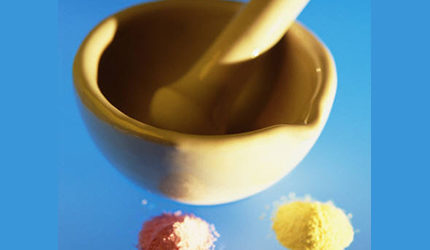
Guidelines for Excipient Studies Proposed by IPEC-Americas
IPEC-Americas is urging excipient makers to follow its voluntary guideline on stability testing in the wake of recent requests by foreign regulators for stability data.
During the first quarter of 2015, IPEC says several companies were told to provide authorities in South America and Asia with data on excipients stored under stressed conditions — those with higher temperatures and higher relative humidity — in addition to long-term stability data on their products.
That puts companies in a bind since there are no formal guidelines for excipient stability, says Phil Merrell, technical market manager for excipients maker Jost Chemical.
In the absence of formal guidance, most excipient makers currently use the International Conference on Harmonisation’s Q1A(R2) guideline to test for stability, even though it’s meant for finished drug products and active pharmaceutical ingredients and not excipients. But Merrell questions the point of separate stability testing for excipients since any problem would be revealed when the finished drug was tested.
IPEC’s guidelines address stability studies under likely — not stressed — conditions. As one option, the group suggests using historical data from batches stored by the manufacturer.
The other option — which IPEC prefers — is to study the excipient in its commercial packaging, placed in a commercial warehouse with a known and monitored temperature. The packaging container/closure system should be defined, and the general conditions under which samples or containers are stored should be known.
If an excipient is meant to be stored at room temperature, then manufacturers can use ICH Q1A(R2), IPEC says. For excipients stored in an uncontrolled warehouse, stability data need to show that such conditions don’t adversely affect the product.
Merrell, who chairs the IPEC subcommittee dealing with the issue, says that because the stability of most excipients is supported by years of data, the guidelines will be most important for new excipients.
The U.S. Pharmacopoeia’s Excipient Verification Program and NSF/IPEC/ANSI 363: Good Manufacturing Practices for Pharmaceutical Excipients, which the FDA endorses, focus on good manufacturing practice and quality of excipients, not their stability. And while the USP’s verification program is designed to provide third-party confirmation of excipient quality for manufacturers, there’s been limited interest in the program.
The European Commission has developed GMP guidelines for excipients, which take effect next March, but they, too, make no mention of stability testing.
Merrell disputes the need for comprehensive stability testing in most cases, saying excipients have been shipped around the world and stored in a variety of conditions for decades with virtually no failures. As long as products are stored in proper containers, stability — for the vast majority of excipients — won’t change, Merrell says. Those excipients that are known to be unstable are already stored and shipped in special temperature- and humidity-controlled refrigerated containers, he said.
An IPEC position paper with a link to the guidelines is available at www.fdanews.com/08-07-15-ExcipientPostionPaper.pdf — Kellen Owings
